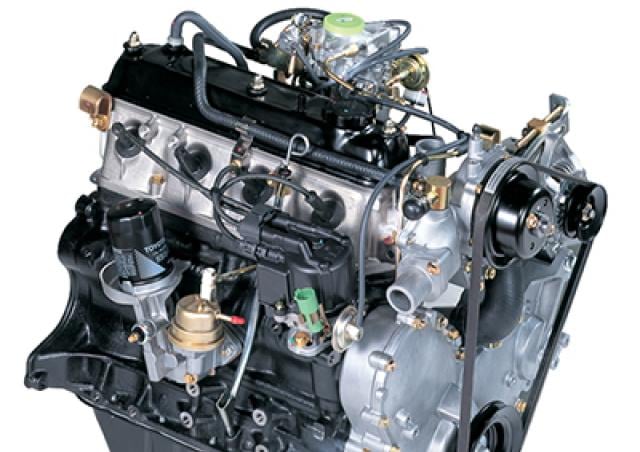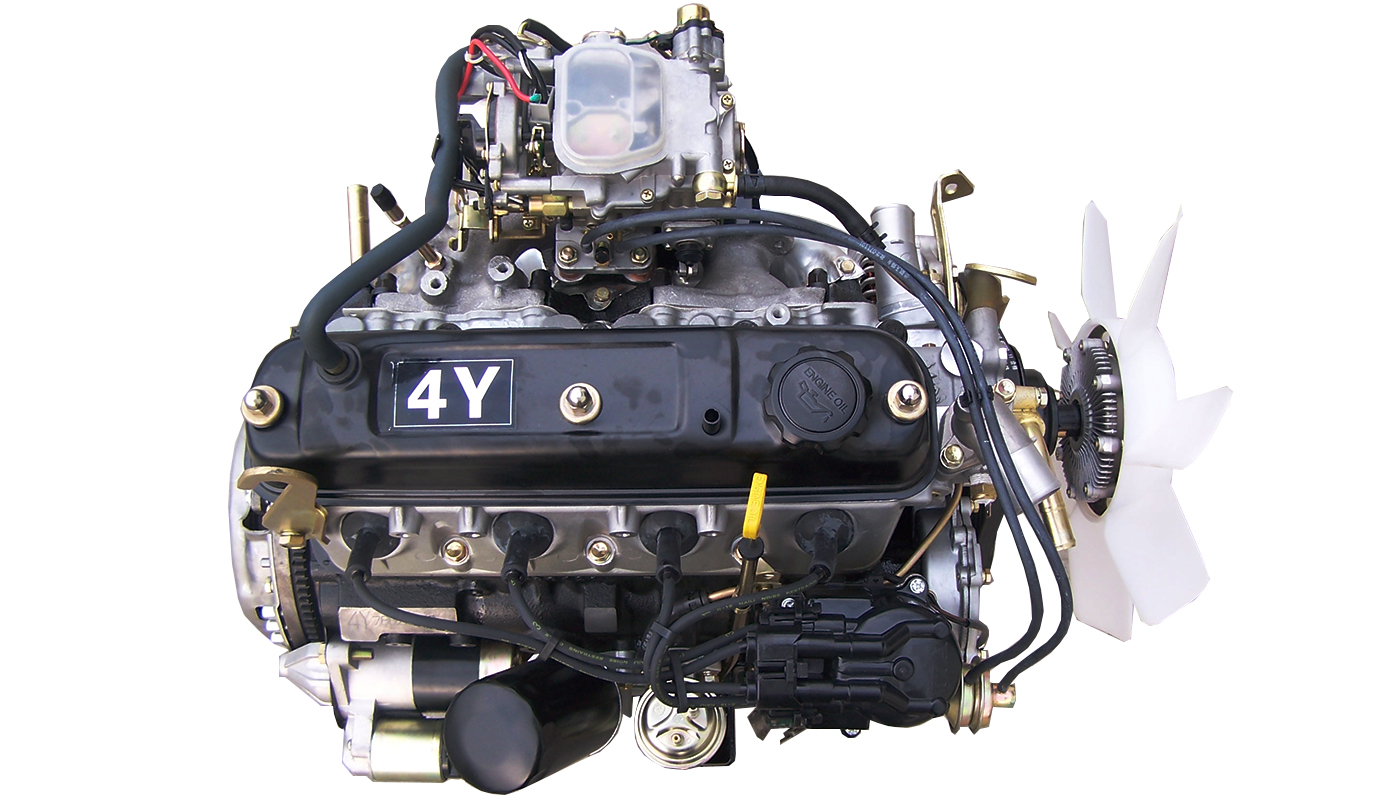Why the Engine Is the very best Option for Efficiency and Performance in Your Car
The engine stays a pivotal element in automotive style, largely due to its substantial influence on both efficiency and effectiveness. As innovations in technology allow smaller sized engines to deliver exceptional power while maximizing fuel economic climate, the integration of attributes such as turbocharging and hybrid systems ends up being progressively essential. These developments not only improve driving experience yet also address environmental concerns. However, the concern develops: just how do these elements coalesce to redefine our understanding of automobile performance? Discovering this equilibrium discloses much deeper insights into the future of engine style.
Understanding Engine Kind
Recognizing the numerous kinds of engines is critical for maximizing efficiency and effectiveness in automobile design. The primary engine kinds consist of interior burning engines (ICE), electrical engines, and hybrid systems, each offering distinct benefits and restrictions.
Interior combustion engines, which can be more classified into fuel and diesel variants, count on the burning of fuel to generate power. Fuel engines commonly give higher RPMs and better velocity, while diesel motor are understood for their torque and fuel performance, making them excellent for durable applications.
Electric engines, on the other hand, make use of electric motors powered by batteries or gas cells. They provide instant torque distribution, leading to smooth acceleration and reduced emissions. The performance of electric engines is significantly greater than that of ICEs, making them a popular selection for eco-conscious consumers.
Crossbreed systems integrate both inner combustion and electrical engines, leveraging the strengths of both modern technologies. They enhance gas usage by utilizing electrical power at lower speeds and changing to gasoline or diesel for higher rates or much heavier loads.
Selecting the appropriate engine type is essential for accomplishing wanted performance metrics and ecological sustainability in modern-day auto engineering.
The Influence of Engine Size
Engine size frequently plays a pivotal role in establishing a vehicle's performance and effectiveness. Normally determined in litres or cubic centimeters, engine dimension directly influences the power outcome and torque characteristics of a car.
Nevertheless, boosted engine size typically associates with reduced fuel effectiveness. Larger engines consume more fuel, resulting in higher emissions and operational prices. Subsequently, suppliers must stabilize the demand for power with the demand for gas economic situation. Smaller engines can supply appropriate efficiency for everyday driving while promoting far better effectiveness, making them a prominent choice in portable and mid-size lorries.
Furthermore, advancements in engine layout, such as turbocharging and direct fuel injection, allow smaller sized engines to achieve power degrees comparable to their bigger counterparts. This pattern highlights the relevance of not entirely focusing on engine dimension however also taking into consideration total lorry style and innovation (4y engine). Ultimately, the effect of engine size on performance and performance underscores the demand for consumers to analyze their particular driving demands and preferences when selecting an automobile
Advanced Engine Technologies
Technologies in engine modern technologies have actually considerably reshaped the landscape of vehicle performance and efficiency, building upon the foundational ideas developed by engine size. Especially, advancements such as turbocharging and direct fuel injection have enabled smaller engines to provide power levels previously connected with bigger equivalents. Turbochargers press air getting in the engine, permitting increased power output without a corresponding increase in engine size, while direct injection enhances gas distribution, Check This Out boosting burning effectiveness.
Furthermore, variable shutoff timing systems have become an important modern technology, allowing engines to adjust valve procedure based on driving conditions. This adaptability improves both performance during velocity and gas effectiveness during cruising. Crossbreed and electrical engine modern technologies additionally show the shift in automotive layout, integrating conventional interior combustion engines with electric motors to optimize effectiveness while minimizing emissions.
Furthermore, advancements in materials science have led to lighter, extra long lasting engine components, better boosting performance and long life. The combination of sophisticated electronic devices and engine control devices likewise enables real-time changes, guaranteeing optimal efficiency across different conditions. Jointly, these sophisticated engine technologies not just improve lorry performance yet likewise add to a much more lasting automobile future, showing the recurring development of engine layout.
Balancing Power and Performance
Striking a balance in between power and efficiency is vital in modern vehicle layout as makers seek to satisfy increasingly rigid exhausts policies while pleasing customer demand for performance (4y engine). The obstacle lies in enhancing engine characteristics to provide robust power outcome without sacrificing fuel economy
To attain this equilibrium, engineers employ numerous strategies, such as turbocharging, which enhances engine power forcibly in more air, enabling a smaller sized engine displacement that enhances gas performance. Variable valve timing innovations likewise play a substantial role, enabling engines to change their performance attributes based upon driving problems, consequently boosting both power and performance.
Furthermore, developments in products and producing methods have actually brought about lighter engine parts, which lower total car weight and boost gas efficiency without compromising power. Crossbreed technologies have actually additionally arised as a sensible remedy, incorporating conventional interior burning engines with electrical powertrains to give an increase in efficiency while preserving lower discharges.

Future Fads in Engine Design

Additionally, the development of sophisticated products, such as lightweight compounds and high-strength alloys, is readied to revolutionize engine elements. These products not only lower weight but likewise boost thermal efficiency, consequently maximizing performance. Furthermore, suppliers are exploring variable compression ratios, permitting engines to adjust to different driving conditions, enhancing both power output and fuel economy.
Better, the rise of synthetic knowledge and artificial intelligence in engine style is making it possible anchor for anticipating maintenance and real-time performance optimization. This modern technology can lead to engines that self-adjust for maximum effectiveness based upon driving patterns.

Conclusion
In final thought, the engine acts as a critical part in attaining optimum efficiency and efficiency in contemporary cars. Advanced innovations, such as turbocharging and hybrid systems, improve power outcome while lessening fuel consumption and emissions. The interplay between engine dimension and view it layout proceeds to advance, driving technologies that balance exhilarating performance with ecological sustainability. As auto design advances, the concentrate on developing efficient, effective engines will certainly stay critical fit the future of transportation.
Additionally, improvements in engine style, such as turbocharging and straight gas injection, permit smaller engines to attain power degrees comparable to their bigger counterparts.Innovations in engine innovations have dramatically reshaped the landscape of automobile performance and effectiveness, building upon the fundamental concepts developed by engine size. Turbochargers press air entering the engine, enabling for increased power result without a corresponding rise in engine size, while straight shot enhances fuel distribution, improving burning efficiency.
Crossbreed and electric engine innovations better show the change in automotive style, combining conventional inner combustion engines with electric motors to make the most of effectiveness while minimizing discharges.
Collectively, these innovative engine modern technologies not only enhance vehicle efficiency but additionally add to a more lasting auto future, demonstrating the recurring evolution of engine style. (4y engine)